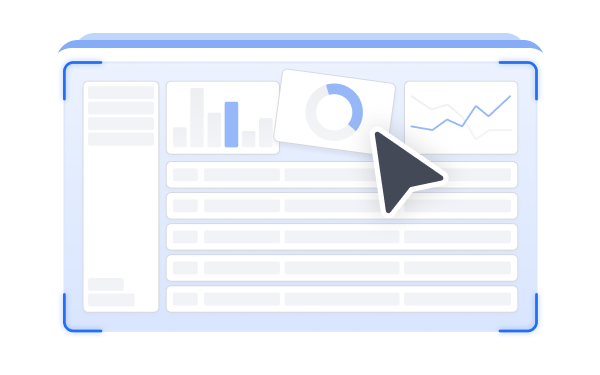The global oil and gas industry is no stranger to change, but in recent years, the midstream sector (the critical link between upstream exploration and downstream refining) has found itself at the crossroads of a digital revolution.
Once dominated by mechanical systems, clipboard inspections and legacy infrastructure, the industry is undergoing a fundamental redefinition. This evolution is being driven by a single, unifying force: digital transformation in midstream oil and gas.
As pressure mounts from investors, regulators and the global push towards cleaner, safer, and more efficient energy; digital transformation has shifted from a buzzword to a business imperative.
Today, forward-looking midstream companies are leveraging technology to enhance performance, reduce costs, and build operational resilience; redefining the future of energy transportation and storage.
For a better understanding related to midstream terminology, please refer to the following blog: “Understanding Key Midstream Terms”.
#What Digital Transformation Means for the Midstream Sector Today
Digital transformation in midstream refers to the strategic integration of digital technologies into every aspect of midstream operations, from pipeline management and terminal operations to storage optimization and logistics.
It’s not simply about automating tasks; it’s about reimagining the entire operating model using data-driven insights and intelligent systems.
Unlike digital upgrades of the past, today’s transformation is holistic. It touches asset management, real-time monitoring, predictive maintenance, regulatory compliance, and even workforce productivity.
At the heart of it lies a simple truth: data is the new oil and digital tools are the refineries that extract its value.
Modern midstream operations are no longer reactive; they are becoming anticipatory, agile, and adaptive.
#Key Technologies Driving the Digital Shift
A range of digital tools are converging to reshape midstream operations. The most impactful technologies include:
1. Internet of Things (IoT)
IoT is revolutionizing pipeline and asset monitoring. Sensors and connected devices embedded along pipelines, tanks, and pumps continuously collect data on pressure, temperature, corrosion and flow rates. This real-time data provides operators with immediate visibility into asset performance and health.
2. Artificial Intelligence and Machine Learning (AI/ML)
AI and ML algorithms analyse vast datasets to uncover patterns, predict failures, and optimize scheduling. From pipeline throughput to maintenance cycles, these technologies enable data-backed decisions with a level of precision human operators simply can’t match.
3. Cloud Computing
The cloud plays a foundational role by centralizing data and applications. Cloud platforms enable seamless collaboration between field teams, control rooms, and corporate offices. They also support scalable data analytics and integration across disparate systems.
4. Automation and Robotics
Autonomous drones, robots, and control systems are performing inspections, monitoring equipment, and executing repetitive tasks. These innovations increase productivity and drastically reduce safety risks, especially in hazardous environments.
#Transformational Impact: Safety, Efficiency, Compliance, and Profitability
Digitalization in the midstream sector is not just improving performance; it’s transforming the operating model in key strategic areas such as:
Safety
Digital tools improve safety by reducing human error and minimising exposure to high-risk environments. Automated systems and predictive analytics allow companies to address safety issues before they escalate.
Impact: Operators can now monitor for gas leaks, pressure spikes, and structural fatigue remotely; often resolving problems before they pose a danger to workers or communities.
Efficiency
From optimised route planning to intelligent asset scheduling, digital solutions eliminate bottlenecks and streamline workflows. Digital twins and simulation models allow companies to test “what-if” scenarios and fine-tune operations without disrupting real-world assets.
Impact: Improved throughput and reduced downtime can translate into millions in annual savings for large operators.
Regulatory Compliance
Environmental and safety regulations are growing more stringent, and non-compliance can result in hefty fines or shutdowns. Digital solutions automate the documentation and reporting process, while real-time data ensures continuous compliance monitoring.
Impact: Digitally tracked data offers transparent audit trails and simplifies reporting for agencies like the EPA or PHMSA.
Profitability
Digital transformation directly contributes to profitability by reducing operating expenses (OPEX), improving asset utilisation, and enabling data-driven capital investments.
Impact: Midstream operators leveraging AI and IoT have reported OPEX reductions of up to 20% and measurable ROI on technology investments within 12–18 months.
For a more detailed insight on how safety and efficiency is impacted, please refer to the following blog: “How Real-Time Data Improves Safety and Efficiency”.
#Real-World Examples: Digital Transformation in Action
Digital initiatives are already delivering results across the sector:
Enbridge has implemented advanced pipeline monitoring systems that use AI to detect small anomalies before they escalate into major issues.
Kinder Morgan uses drone inspections and IoT-enabled infrastructure to monitor assets with greater frequency and accuracy.
Across the industry, digital twin technology is being deployed to simulate pipeline behavior, allowing operators to test scenarios without real-world risks.
These initiatives reflect a broader midstream energy trend toward smarter, safer, and more resilient infrastructure.
#The Evolving Role of Data-Driven Decision Making
In digitally enabled midstream operations, data is no longer siloed or reactive; it’s central to strategic decision-making.
With the integration of advanced analytics, operators gain the ability to visualise complex systems in real time, forecast demand, and make proactive decisions about asset deployment and maintenance.
This shift enables a move from operational hindsight to operational foresight; a change that is redefining competitive advantage.
Companies that fully embrace digital tools are better equipped to respond to oil price volatility, supply chain disruptions, cyber threats and evolving market demands.
To further gain an insight regarding the shift towards smart systems, please refer to the following blog: “From Spreadsheets to Smart Systems”.
#Operator Benefits: Agility, Resilience, and Cost Savings
The transformation yields tangible and sustainable advantages for midstream operators:
Agility: Quickly adapt to changing supply-demand dynamics and regulatory requirements.
Resilience: Detect and mitigate risks early, ensuring uninterrupted operations.
Cost Savings: Lower maintenance costs, fewer shutdowns, improved asset longevity, and reduced human intervention all add up to significant savings.
Moreover, companies that lead in digital maturity are also more attractive to investors, stakeholders and employees; further reinforcing their long-term value.
#Conclusion: A Defining Moment for the Midstream Sector
As we look ahead, the message is clear: digital transformation in midstream oil and gas is no longer optional; it’s a competitive necessity.
Companies that invest in IoT, AI/ML, cloud and automation are positioning themselves at the forefront of a more efficient, resilient and sustainable energy infrastructure.
The future of midstream is intelligent, interconnected and insight-driven. Operators that embrace this new era of modern midstream operations will not only survive; they will thrive.

Table of contents
- What Digital Transformation Means for the Midstream Sector Today
- Key Technologies Driving the Digital Shift
- Transformational Impact: Safety, Efficiency, Compliance, and Profitability
- Real-World Examples: Digital Transformation in Action
- The Evolving Role of Data-Driven Decision Making
- Operator Benefits: Agility, Resilience, and Cost Savings
- Conclusion: A Defining Moment for the Midstream Sector



